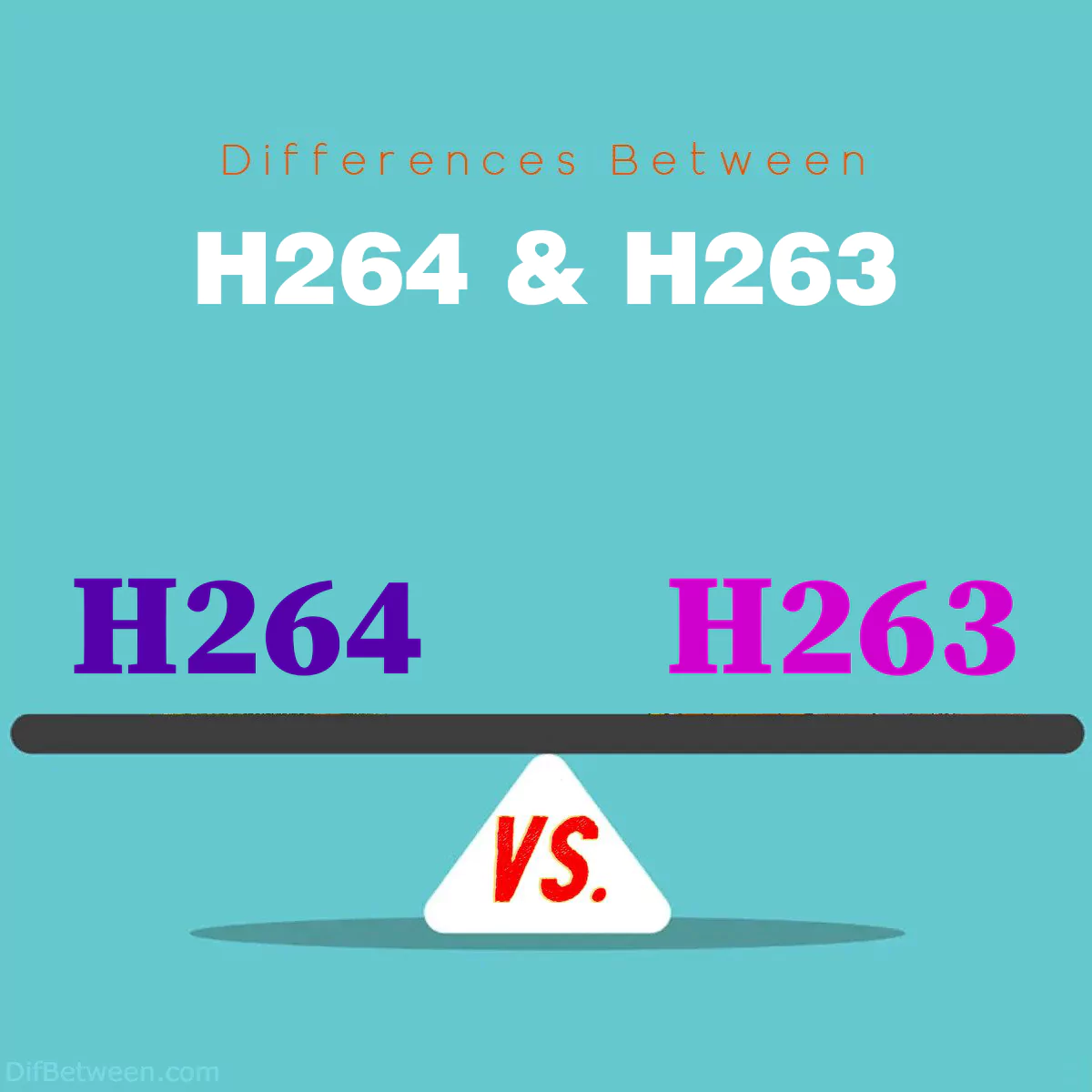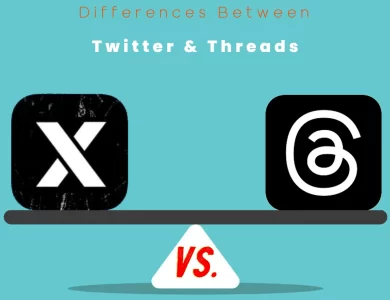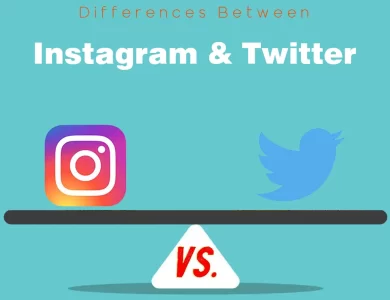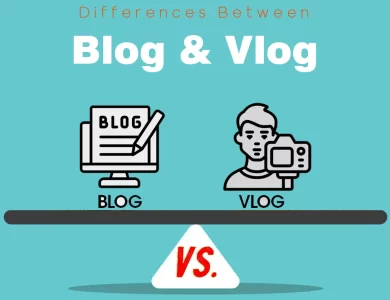
| Aspect | H.264 | H.263 |
|---|---|---|
| Compression Efficiency | Superior compression efficiency. | Less efficient compression. |
| Video Quality | Higher video quality, especially at lower bitrates. | Good video quality but may suffer at lower bitrates. |
| Bitrate and Bandwidth Requirements | Lower bitrates and bandwidth requirements. | Higher bitrates and bandwidth requirements. |
| Compatibility and Adoption | Widespread support across devices and platforms. | Limited adoption in modern applications. |
| Real-Time Communication | Well-suited for real-time communication applications. | May struggle in demanding real-time scenarios. |
| Complexity and Processing Power | More complex and demands higher processing power. | Less complex and suitable for older devices. |
| Licensing and Royalties | Variable licensing terms, may include royalties. | Variable licensing terms, potential for royalties. |
In the ever-evolving world of digital video compression, H.264 and H.263 are two significant players. These codecs play a pivotal role in ensuring that video content is efficiently compressed for streaming, storage, and playback. If you’re curious about the differences between H.264 and H.263, you’ve come to the right place. In this comprehensive guide, we’ll delve into the key distinctions between these two codecs, shedding light on their specifications, performance, and use cases.
Differences Between H264 and H263
The main differences between H.264 and H.263 lie in their compression efficiency, video quality, and compatibility. H.264, known for its superior compression efficiency, excels in reducing file sizes while maintaining high video quality, making it the preferred choice for modern applications like streaming and video conferencing. On the other hand, H.263, an older codec, may struggle to deliver the same level of efficiency and quality, but it remains an option for scenarios where compatibility with legacy devices or simplified processing power is crucial. When deciding between the two, consider your specific project requirements, as H.264 caters to bandwidth-conscious, high-quality applications, while H.263 offers compatibility advantages for older systems.
1. Introduction to H.264 and H.263
Before we dive into the differences, let’s get to know H.264 and H.263 a bit better.
H.264:
H.264, also known as AVC (Advanced Video Coding), is a widely adopted video compression standard. It was first introduced in 2003 by the ITU-T Video Coding Experts Group and the ISO/IEC Moving Picture Experts Group. H.264 offers exceptional video quality and compression efficiency, making it a popular choice for various applications, including streaming, video conferencing, Blu-ray discs, and more.
H.263:
H.263, on the other hand, predates H.264 and was developed in 1996 by the ITU-T Video Coding Experts Group. It served as a crucial stepping stone in the evolution of video codecs and was a successor to H.261. H.263 was primarily designed for video conferencing and was a significant improvement over its predecessor in terms of compression efficiency and video quality.
Now that we’ve acquainted ourselves with the basics, let’s delve into the key differences between H.264 and H.263.
2. Compression Efficiency
One of the fundamental aspects to consider when comparing video codecs is their compression efficiency. How well do they reduce the size of video files while maintaining acceptable quality? Let’s see how H.264 and H.263 stack up in this regard.
H.264 Compression Efficiency:
H.264 is renowned for its superior compression efficiency. It employs advanced techniques such as inter-frame prediction, motion compensation, and entropy coding to significantly reduce the file size while preserving video quality. This efficiency makes H.264 suitable for high-definition video streaming and storage, where bandwidth and storage space are precious resources.
H.263 Compression Efficiency:
H.263, while an improvement over its predecessors, doesn’t match the compression efficiency of H.264. It uses simpler compression techniques, which result in larger file sizes for the same level of video quality. This makes H.263 less suitable for applications that demand high compression ratios or those with limited bandwidth and storage capabilities.
To illustrate the difference in compression efficiency between the two codecs, let’s consider a practical example. Suppose you have a 10-minute video clip in high definition. When encoded with H.264, it may result in a significantly smaller file size compared to encoding the same clip with H.263, all while maintaining comparable video quality.
| Codec | File Size for 10-Minute HD Video | Compression Efficiency |
|---|---|---|
| H.264 | Smaller | Higher |
| H.263 | Larger | Lower |
As the table suggests, H.264 outshines H.263 in terms of compression efficiency, making it the preferred choice for applications where efficient use of bandwidth and storage is crucial.
3. Video Quality
While compression efficiency is essential, it should not come at the cost of video quality. Let’s explore how H.264 and H.263 compare when it comes to delivering excellent video quality.
H.264 Video Quality:
H.264 is celebrated for its ability to provide high-quality video even at low bitrates. This is achieved through various techniques like adaptive quantization and rate control. As a result, H.264 is often the codec of choice for streaming platforms like Netflix, YouTube, and Twitch, where maintaining video quality across varying network conditions is paramount.
H.263 Video Quality:
H.263 offers decent video quality, especially when it was first introduced. However, it falls short of H.264’s capabilities in this department. Its older compression techniques and limited ability to adapt to changing network conditions mean that it may not deliver the same level of video quality as H.264, especially in demanding scenarios.
To put it into perspective, imagine you’re watching a live sports event streamed online. H.264-encoded video is more likely to provide a smoother and sharper viewing experience, even if your internet connection isn’t the fastest. H.263, while still watchable, might exhibit more artifacts and lower overall quality under similar conditions.
| Codec | Video Quality |
|---|---|
| H.264 | Higher |
| H.263 | Lower |
In the realm of video quality, H.264 emerges as the winner, making it the go-to choice for applications where top-notch visuals are a priority.
4. Bitrate and Bandwidth Requirements
Bitrate and bandwidth play a pivotal role in video streaming and distribution. Understanding how H.264 and H.263 differ in their bitrate and bandwidth requirements is crucial for optimizing your media delivery.
H.264 Bitrate and Bandwidth:
H.264 has the advantage of being able to deliver good video quality at lower bitrates, which translates to lower bandwidth requirements. This efficiency is especially valuable for streaming platforms and content providers, as it allows them to reach a broader audience, including those with slower internet connections.
H.263 Bitrate and Bandwidth:
H.263, while efficient in its own right, generally requires higher bitrates to maintain acceptable video quality compared to H.264. This translates to higher bandwidth demands, which can be a limiting factor, particularly in regions with limited internet infrastructure.
To illustrate this difference, let’s consider a scenario where you’re streaming a video over a mobile network with a limited data plan. H.264’s ability to provide good video quality at lower bitrates means that you can enjoy the content without exhausting your data allowance quickly. In contrast, using H.263 might result in faster data consumption due to its higher bitrate requirements.
| Codec | Bitrate Efficiency | Bandwidth Requirements |
|---|---|---|
| H.264 | Higher | Lower |
| H.263 | Lower | Higher |
In terms of bitrate efficiency and bandwidth requirements, H.264 emerges as the more economical choice, making it suitable for scenarios where conserving bandwidth is essential.
5. Compatibility and Adoption
A codec’s adoption and compatibility are critical factors in determining its relevance in the digital video landscape. Let’s see how H.264 and H.263 fare in terms of industry support and compatibility.
H.264 Compatibility and Adoption:
H.264 enjoys widespread support across a plethora of devices, software, and platforms. It has become the de facto standard for video compression, making it an excellent choice for content creators and distributors. Whether you’re using a modern smartphone, a web browser, or a professional video editing software, chances are it supports H.264.
H.263 Compatibility and Adoption:
While H.263 has a history of adoption, especially in video conferencing applications, its prevalence has diminished over the years. Many modern devices and software applications prioritize H.264 or newer codecs, which may lead to compatibility issues when dealing with H.263-encoded content. This can be a drawback if you’re looking for seamless integration across a wide range of platforms.
To put it simply, if you’re creating video content that needs to be accessible to the broadest possible audience, H.264 is the safer choice due to its extensive compatibility.
| Codec | Compatibility |
|---|---|
| H.264 | Widespread |
| H.263 | Limited |
6. Real-Time Communication
Real-time communication applications, such as video conferencing and live streaming, have specific requirements when it comes to video codecs. Let’s explore how H.264 and H.263 perform in these scenarios.
H.264 in Real-Time Communication:
H.264 is well-suited for real-time communication applications. Its efficient compression and good video quality make it ideal for video conferencing platforms like Zoom, Skype, and Microsoft Teams. Additionally, H.264’s ability to adapt to varying network conditions ensures a smoother communication experience even when the internet connection is less than perfect.
H.263 in Real-Time Communication:
H.263, while originally designed for video conferencing, may struggle to keep up with the demands of modern real-time communication applications. Its older compression techniques and lack of adaptability to fluctuating network conditions can result in a less satisfactory user experience compared to H.264.
Consider a scenario where you’re conducting a crucial video conference with clients or colleagues. Using H.264 is more likely to provide a seamless and high-quality communication experience, ensuring that your message is conveyed effectively.
| Codec | Real-Time Communication Suitability |
|---|---|
| H.264 | High |
| H.263 | Moderate |
In real-time communication scenarios, H.264 emerges as the more suitable choice, offering better performance and quality.
7. Complexity and Processing Power
The complexity of a codec can impact its requirements in terms of processing power, which is especially important for devices with limited computational resources. Let’s examine how H.264 and H.263 differ in terms of complexity.
H.264 Complexity and Processing Power:
H.264 is a more complex codec compared to H.263. Its advanced compression techniques, including inter-frame prediction and motion compensation, require more computational power for encoding and decoding. While modern devices like smartphones and computers can handle H.264 with ease, older or less powerful devices may struggle with it.
H.263 Complexity and Processing Power:
H.263, being an older codec with simpler compression methods, is less demanding in terms of processing power. It can run efficiently on a broader range of devices, including older smartphones and legacy hardware. This makes H.263 a viable choice for scenarios where compatibility with older equipment is a concern.
To put it into perspective, if you have a collection of older video conferencing equipment that you want to use for virtual meetings, H.263 might be a practical choice. It ensures that your legacy devices can still participate in modern video conferences without the need for costly hardware upgrades.
| Codec | Complexity | Processing Power Requirements |
|---|---|---|
| H.264 | High | Moderate to High |
| H.263 | Low | Low to Moderate |
In terms of complexity and processing power, H.263 is the more lightweight option, making it suitable for scenarios where older or less powerful devices are in use.
8. Licensing and Royalties
Another crucial aspect to consider when choosing a video codec is the associated licensing and royalties. These factors can significantly impact the cost of using a particular codec in your projects.
H.264 Licensing and Royalties:
H.264 has a complex licensing structure, which has evolved over the years. While some versions of H.264 may be available for free use, others may require licensing fees, particularly for commercial applications. The licensing terms can vary depending on factors like usage, distribution, and the specific H.264 profiles used.
H.263 Licensing and Royalties:
H.263, being an older codec, may have more lenient licensing terms in some cases. However, it’s essential to verify the licensing requirements for your specific use case, as licensing terms can still apply, particularly if you plan to use H.263 in commercial products or services.
Before choosing a codec, it’s advisable to consult the licensing terms and assess the potential costs associated with its usage. This step can help you avoid unexpected expenses down the road.
| Codec | Licensing and Royalties |
|---|---|
| H.264 | Variable |
| H.263 | Variable |
In terms of licensing and royalties, both H.264 and H.263 come with variable conditions, so it’s crucial to review the licensing terms carefully to determine the best fit for your project.
H264 or H263 : Which One is Right Choose for You?
Choosing between H.264 and H.263 depends on your specific needs and the context of your project. Let’s break down the decision-making process to help you determine which codec is the right choice for you:
Choose H.264 If:
- Compression Efficiency Matters: If you need to efficiently compress video content while maintaining good quality, H.264 is the better choice. It excels in compression efficiency, making it suitable for applications where bandwidth and storage optimization are crucial.
- High-Quality Video is Essential: When maintaining high video quality, even at lower bitrates, is a top priority, H.264 is the preferred option. This is particularly important for streaming platforms and content providers.
- Low Bitrates and Bandwidth Are Critical: H.264 requires lower bitrates and bandwidth, making it a cost-effective choice for scenarios where conserving bandwidth is essential, such as streaming over limited internet connections.
- Compatibility is Key: H.264 enjoys widespread support across a wide range of devices and platforms. If you need compatibility with modern equipment and software, H.264 is a safe bet.
- Real-Time Communication is a Focus: If you’re working on real-time communication applications like video conferencing or live streaming, H.264 is well-suited for delivering smooth and high-quality experiences.
Choose H.263 If:
- Compatibility with Older Devices is Necessary: If you have legacy equipment or older devices in your ecosystem, H.263 is a more practical choice due to its lower processing power requirements and compatibility with older hardware.
- Simplified Processing Power is a Priority: H.263 is less complex and demands less processing power. If you’re working with devices that have limited computational resources, H.263 may be the more suitable option.
- Budget Constraints Apply: While licensing terms can vary, H.263 may have more lenient licensing conditions in some cases. If you’re on a tight budget, carefully review the licensing terms for your specific use case.
- Moderate Video Quality is Acceptable: H.263 offers good video quality but may not perform as well as H.264, especially at lower bitrates. If you can accept slightly lower video quality for your application, H.263 might be sufficient.
- Limited Adoption in Modern Applications is Acceptable: Keep in mind that H.263 has limited adoption in modern applications. If your project doesn’t require compatibility with the latest devices and software, this may not be a concern.
In summary, the choice between H.264 and H.263 should align with your project’s priorities, including compression efficiency, video quality, compatibility, processing power, and budget considerations. Carefully evaluate your specific requirements and constraints to make an informed decision that best suits your needs. Additionally, consider exploring newer codecs like H.265 (HEVC) and AV1, which offer further improvements in compression efficiency and video quality.
FAQs
H.264 and H.263 are video codecs, which are software or hardware tools used to compress and decompress digital video content. They are designed to reduce the size of video files while maintaining acceptable video quality.
The main differences lie in compression efficiency, video quality, and compatibility. H.264 offers superior compression efficiency, better video quality, and broader compatibility with modern devices and software. In contrast, H.263 is older, less efficient, and more suitable for compatibility with legacy equipment.
H.264 is widely used in various applications, including video streaming platforms (e.g., Netflix, YouTube), video conferencing (e.g., Zoom), Blu-ray discs, and digital television broadcasts. Its compression efficiency and video quality make it a preferred choice for these modern applications.
H.263 is practical when compatibility with older devices or simplified processing power is essential. It can be used in scenarios where efficient compression is not the primary concern, such as legacy video conferencing systems.
Yes, both codecs may have licensing requirements, and the terms can vary. It’s important to review the specific licensing terms for your use case, as they may include royalties, especially for commercial applications.
Both codecs are gradually being phased out in favor of more advanced codecs like H.265 (HEVC) and AV1. These newer codecs offer improved compression efficiency and video quality. However, H.264 and H.263 may still be relevant for specific applications with compatibility constraints.
Yes, it’s possible to convert video content between these codecs using video transcoding software. However, keep in mind that you may experience some loss in video quality during the conversion process, as the codecs have different compression techniques.
H.264 is generally a better choice for real-time communication applications like video conferencing and live streaming. Its efficient compression, good video quality, and adaptability to varying network conditions make it suitable for delivering smooth communication experiences.
Yes, there are open-source video codecs like VP9 and AV1, which are gaining popularity due to their efficiency and royalty-free nature. These codecs offer alternatives to both H.264 and H.263 for various applications.
To make an informed decision, assess your project’s requirements. If you prioritize compression efficiency, high-quality video, and compatibility with modern devices, choose H.264. If you need compatibility with older equipment or simplified processing power, consider H.263. Evaluate your specific needs to select the most suitable codec for your multimedia endeavors.
Read More :






